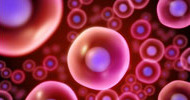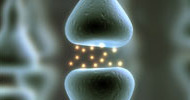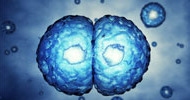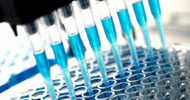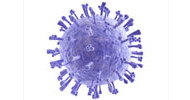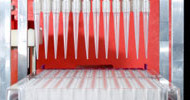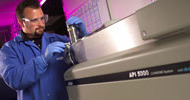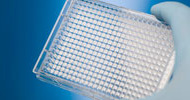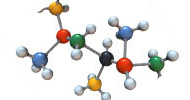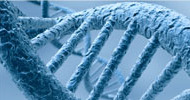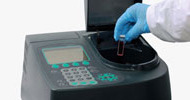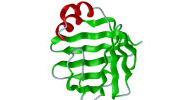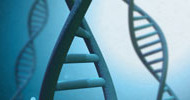Description
With more than 25 years of experience as a CRO company, Creative Biolabs has recently made a tremendous breakthrough in the field of de novo monoclonal antibody sequencing with the Database Assisted Shotgun Sequencing (DASS) technology. The DASS is advanced from the Next Generation Sequencing (NGS) platform, which was used to sequence the variable regions, variable plus leader regions, as well as the full-length heavy and light-chain antibodies of all species, isotypes, and allotypes.Monoclonal antibody, a type of protein molecule, partakes an important role in the category of drug and diagnostic reagent. Its primary structure, especially the amino acid sequence of its Complementarity Determining Region (CDR), determines its biological function. Compared to the traditional methods, the DASS system can analyze the complete sequence of the monoclonal antibody much quicker and with higher accuracy, which brings hope to the medical research area.
Conventional methods for monoclonal antibody sequencing comprise Edman degradation, mass spectrometry, and traditional de novo sequencing.
1. Edman Degradation
Edman degradation is known as one of the classical methods that can obtain the exact sequence of the N-terminal mutant or modified proteins. However, this method is inefficient and single threaded when analyzing multiple proteins simultaneously. Moreover, Edman degradation reaction remains ineligible for the N-terminal blocked proteins, of which the alpha-amino is modified with acetylation, methylation, pyroglutamidation, etc. The antibody is first digested with protease at its N-terminal. Each of the resulting free alpha-amino acid is identified by High Performance Liquid Chromatography (HPLC). After several rounds of digestion and HPLC identification, the sequence at the N-terminal of the antibody then gets determined.
2. Traditional Mass Spectrometry
Traditional mass spectrometry was regarded as a comparatively comprehensive technology at the time, because it is high-throughput and cost-effective. Antibody sequencing mass spectrometry solved the principal problems encountered during the Edman degradation. Nevertheless, there still exist some deficiencies in this method. For example, users could receive false outcomes resulted from incomplete sequencing, omission of matching peptide segments with mass spectrometry, and mutation or unknown modification. Moreover, mass spectrometry is only effective when the sequence of the amino acids or protein database are available.
3. Traditional De Novo Sequencing
Evolved from the traditional mass spectrometry, the antibody de novo sequencing can solve most of the potential problems that arise from the above two methods. This method, integrated with the de novo algorithm, holds the capability of performing amino acid sequencing and post-translational modification analysis. It relies on the regular breakage of protease-cut peptide molecules in mass spectrometry detection. After finding the specific breakage mode, it can calculate the information according to the mass between peaks of mass spectrometry. The main technology involved is HPLC. However, this method is still limited in that it cannot precisely distinguish the difference of isobaric amino acids with exactly the same mass and very similar chemical characteristics.
Among the above-mentioned methods, the thorniest challenge rests with differentiating between leucine (Leu) and isoleucine (Ile). None of the methods could efficiently recognize the difference between the two amino acids with 100% accuracy. The randomly allocated Ile and Leu in the complementary determinant region fundamentally determines the antibody function. For example, some antibodies may not have any Leu or Ile in any of the 6 CDRs, while in some other cases there could be 9 in total. On average, a single CDR contains at least 3 to 5 Ile or Leu residues. It remains a problem for the researchers when sequencing antibodies and their functions. Results are usually imprecise since only the alignment method can infer their possible locations. Sequencing errors may cause significantly varied binding behavior. Even one misplaced amino acid in the primary sequence can destructively affect the final antibody structure and function. Thus, a strategy to distinguish Ile and Leu is urgently needed.
With accumulated experience, scientists from Creative Biolabs have pierced through the aforesaid problems and developed a Database Assisted Shotgun Sequencing (DASS) technology to precisely distinguish between leucine and isoleucine. The DASS is the first in the history of antibody sequencing to break through the problem faced with worldwide scientists working on the monoclonal antibody sequencing. The Ile and Leu in the CDR can now be accurately classified.
Monoclonal antibody sequencing plays a crucial role in enhancing antibody affinity and humanization through obtaining the first-order antibody sequence, which acts as the basis and prerequisite when developing antibody generic drugs. Direct sequencing analysis of existing antibody products on the market is a shortcut to developing antibody drugs, antibody diagnostic reagents and other antibody products. Hence, the advancement of precisely identifying the amino acids can significantly enhance the field of precision medicine. The DASS developed by the Creative Biolabs helps to build a solid function for subsequent application by saving time and economic costs, and improve the functional analysis and verification.














